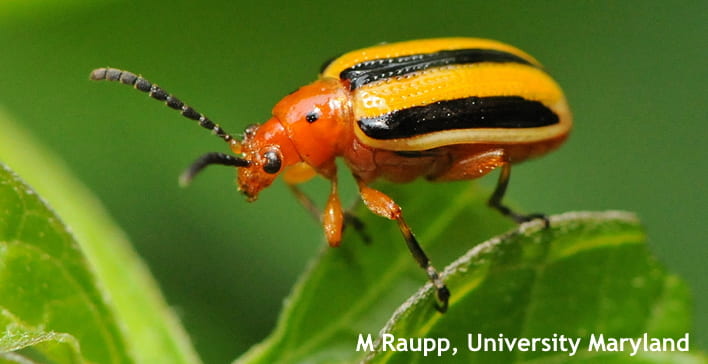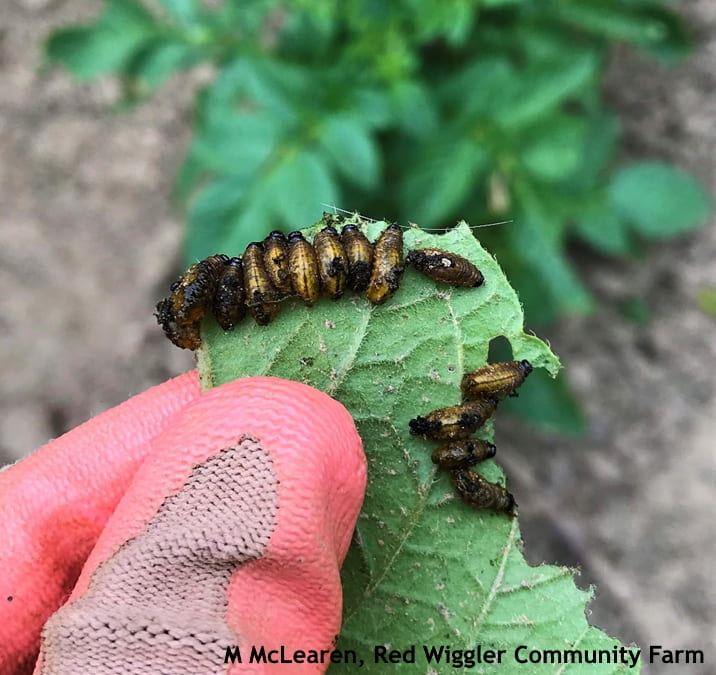Jerry Brust, IPM Vegetable Specialist, University of Maryland; jbrust@umd.edu
I was at a farm the other day that had a wide variety of crops on it and the grower showed me what we at first thought were odd looking Colorado potato beetle larvae in their tomatillos, but they did not really look like CPB. These larvae were three-lined potato beetle Lema trilinea, which can be found on Solanaceae crops such as potato, tomato, eggplant, pepper, etc. The funny thing is they are usually not found on potato or tomato, but most commonly found on tomatillo Physalis ixocarpa as they were on this farm.
Adults are orange-yellow, with three lengthwise black stripes (Fig. 1). These stripes can look very similar to striped cucumber beetle stripes. The head and thorax are usually orange. Female beetles lay 6-20 orange-yellow eggs in groups, usually on the undersides of leaves. Eggs hatch in about two weeks and larvae feed side by side in a row (Fig. 2), starting at the leaf edge and moving backward. When larvae are larger they separate and move around the plant. Larvae are full grown in about two to three weeks. Larvae pupate in the ground and emerge in 1-2 weeks as adults that will eventually overwinter and emerge next year in early spring.

Figure 1. Adult three lined potato beetle
The weird thing about these larvae is that their body is kept moist and sticky by a coating of their own feces. The larvae feed on Solanaceous plants that contain glycoalkaloids which most other insects do not like to eat. So the larvae cover their bodies with their own feces, making them distasteful to predators.
Larvae and adults feed on Solanaceous crops and prefer tomatillos and husk tomatoes (Physalis pruinosa or P. pubescens). Both larvae and adults chew angular shaped holes in the leaves, feeding along the margin of the leaf and can consume most leaf tissue except for the mid-vein. Larvae tend to feed on the underside of leaves.
Although the damage by this pest is sporadic and population levels rarely reach economic levels, I have seen them more often in the last couple of years feeding on various solanaceous crops, possibly because tomatillo crops are becoming more common. As of right now controls are rarely needed for management. However if necessary the pesticides used for Colorado potato beetle, also can be effective against the three-lined potato beetle.

Figure 2. Three lined potato beetle larvae covered in feces lined up to feed
